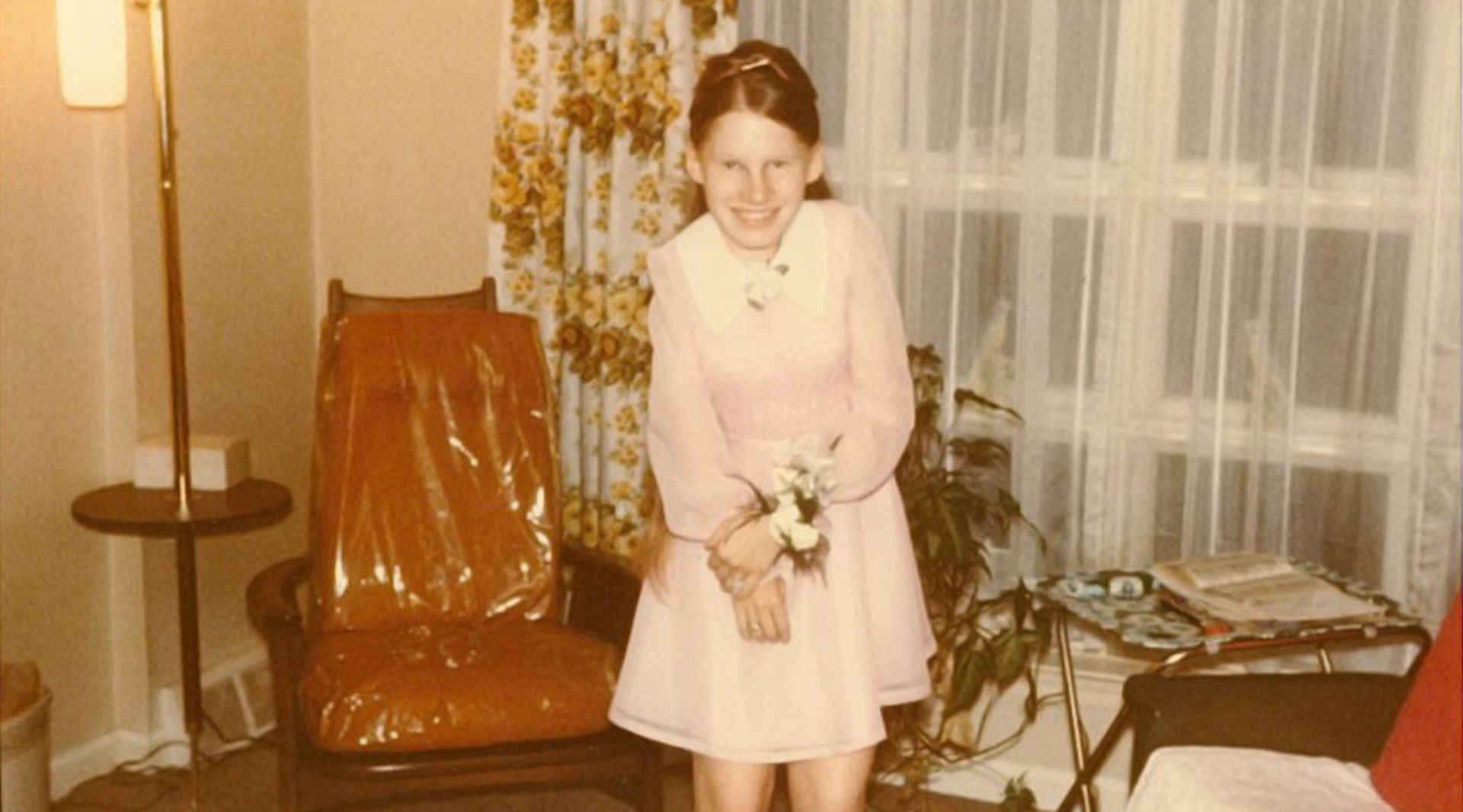
Harry and Carol
This exhibit is about Harry Eastlack and Carol Orzel. They lived with FOP, an ultra-rare disease that caused their bodies to grow bone where it does not usually grow.
The Mütter Museum is now home to the skeletons of Harry Eastlack and Carol Orzel, two Philadelphians who both lived with and suffered from Fibrodysplasia Ossificans Progressiva (FOP).
Fibrodysplasia Ossificans Progressiva (FOP)
Diagnosis
FOP is caused by a genetic mutation that transforms connective tissue, such as muscle, ligaments, and tendons, into bone. This results in progressive fusion of all the joints in the skeletal system.
Prognosis
FOP is deadly; the median estimated life expectancy is 56 years. No cure or effective treatment exists, however, as of 2019, three drugs are in clinical trials.
Harry & Carol
Harry Raymond Eastlack Jr. was born on November 17, 1933 in Philadelphia. It was a normal delivery, however, the doctors noted he had malformed big toes. He exhibited no other symptoms of FOP until 1937 when he broke his left femur. When he was discharged from the hospital, a noticeable bulge had formed on the front of his left thigh.The following year, in 1938, Harry was diagnosed with FOP. His joints slowly began to fuse together, and by 1946, his body was permanently angled, his spine was fused, and the muscles in his upper back were ossified.
In 1958, at the age of 25, he was admitted to a long-term care facility. Harry was eventually bedridden and spent the rest of his life in considerable pain. He died of pneumonia on November 11, 1973, six days short of his 40th birthday.Before Harry died, he requested that his body be used to help understand more about his disease. Harry never met another person with FOP while he was alive, but in death he has helped physicians and researchers better understand this rare disease.
Harry Eastlack
Carol Ann Orzel was born on April 20, 1959 and was diagnosed with FOP as a child. In 1982, she moved to the Inglis House—the same long-term care facility where Harry once lived—where she spent the rest of her life. Carol was extremely active in the FOP community: she advocated for more research, established networks of communication with others with FOP, and educated both the public and medical professionals about the disease.
Carol Orzel
Curator's FAQ
Curator's FAQ
- Carol was an avid collector of costume jewelry. When she visited the Mütter Museum and expressed her wish to hang next to Harry, she added, "Only if my jewelry can be displayed there too."
While both Harry and Carol were residents of Inglis House, they never met in life. Carol first saw Harry in 1995 at an International FOP Association conference in Philadelphia, where Harry's skeleton was on display. Seeing it had a profound impact on her, and she decided to donate her skeleton to the Mütter Museum so that she would be able to continue to educate the world about FOP.
From the first moment I met Carol, she was unforgettable—witty, charming, and in-charge...
– Dr. Frederick Kaplan
The Life and Legacy of Carol Orzel
Carol’s doctor, Frederick S. Kaplan, MD, at the Perelman School of Medicine at the University of Pennsylvania, is the leading FOP researcher. Dr. Kaplan worked closely with Carol. He co-directs the only center in the world devoted to the study of FOP. Dr. Kaplan is a Fellow (elected member) of The College of Physicians of Philadelphia, which operates and houses the Mütter Museum.
“Carol was an advocate of medical education— and played a seminal role in educating nearly three generations of medical students at the University of Pennsylvania— often meeting them, lecturing to them during their genetics course, sharing her story on their very first day of medical school, and earning a standing ovation from more than 150 students in each class, year after year,” Dr. Kaplan said in his remarks at Carol’s memorial service.
What is Fibrodysplasia Ossificans Progressiva?
People who have fibrodysplasia ossificans progressiva (FOP), an ultra-rare and disabling genetic disease, form two skeletons — a primary one like everyone else and a second one created from their skeletal muscles and other connective tissues. FOP affects approximately one in two million people. About 900 people in the world have been diagnosed with FOP.
FOP is caused by a gene mutation that transmits incorrect signals in cells and transforms soft connective tissue (such as muscle, ligaments, and tendons) into bone. This formation of bone where it is not supposed to be is called heterotopic ossification (HO). FOP is difficult to diagnose at birth because there are no visual signs except for malformed big toes. Diagnosis usually occurs after the body begins creating extraskeletal bone, often following an injury or a viral infection.
No racial, ethnic, sex, or geographic preferences are seen in people with FOP. Because of its rarity and early tumorlike symptoms, FOP is often misdiagnosed, usually as cancer. FOP is deadly; the median estimated life expectancy is 56 years. Most FOP deaths are caused by cardiorespiratory failure due to fusion of the rib cage. In 2006, a research team at Penn identified the genetic mutation that causes FOP in all affected people. No cure or effective treatment exists, however, as of 2019, three drugs are in clinical trials.
The Importance of Researching Rare Diseases
There are an estimated 7,000 rare diseases and 25 to 30 million Americans living with a rare disease. By identifying the genes that cause rare diseases, we improve the understanding of our genetic selves and the processes that regulate health and disease.
For example, Heterotopic Ossification (HO), when bone tissue develops outside of the skeleton, is a growing area of concern and study because it affects many people who’ve had hip replacements as well as many military veterans who were in injured in Iraq and Afghanistan. Through researching the rare disease of FOP, doctors and scientists hope to be able to better treat the more-widespread HO.